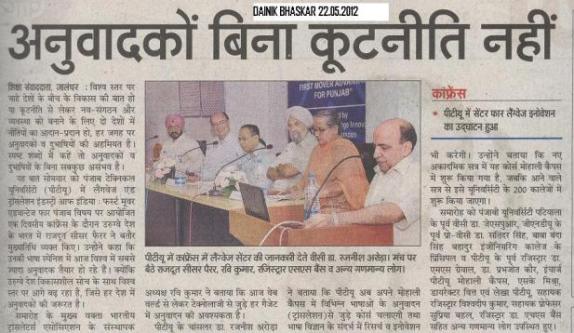Translation, in the Indian context, has a very different connotation than in other parts of the world. In India, we are more tuned to trans-creation or adaptation, more aptly expressed in rupantar or anuvaad, whereas, in the west or in the US, translation means being faithful to the original text while transferring it into the target language. Thus a literal adaptation of the language to be translated happens here and what comes out of it is ‘Trans-creation’ and not Translation. Perhaps, this difference lies in our oral tradition of transferring knowledge, which gives us the flexibility to enrich and bring adaptations in a new language or in a totally different cultural set.
Moreover, in India, people mostly associate translation with literature. But the reality is far different from this. The scope of this vocation is much higher in non-literary assignments. For example, translating a book on Java programming from Spanish to English is non-literary where there is little scope left for trans-creation, on the other hand, translating the Ramayana, an ancient Hindu text in Portuguese is a literary translation where the translator has lots of scope to prove and testify his/her creativity. This ‘literary connotation’ only helps us classify translation as an art or a skill. It can be referred to as an ART when it is done in the context of literature, whereas, it becomes a SKILL when put to use for non-literary functions because such translations require an individual to undergo customized training and technology integration.
What distinguishes translation and trans-creation?
“Translation is the comprehension of the meaning of a text and the subsequent production of an equivalent text, likewise called a "translation," that communicates the same message in another language.” The above definition at wikipedia does bring home the meaning of the word. Trans-creation, on the other hand, implies presenting a particular text in another language in the most casual manner possible where the meaning would be close to clear like – May I Come in Sir? is a phrase whose actual translation should be - ‘Kya main andar aa jaun?’ Now, some people would write it like – ‘kya mai andar aa jaun, shree maan ji?’ This is adaptation and ‘Aaun Kya?’ would amount to trans-creation.
What challenges does a beginner face in this field?
At the learning stage, the complexity of certain languages at times forces an individual to develop disinterest towards what s/he is doing. Just concentrate a little and the mist soon starts to fade away.
But once one starts working, the biggest challenge is that of rejection. Ensure that you have all the traits of a good translator.
What are the good traits of a translator?
A translator who takes care of the following points, will most likely produce a good translation.
a. Excellent command over the language (grammar, structures, tenses)
b. No omissions
c. No mistranslation
d. No spelling errors
e. Accurate choice of words
f. Maintaining consistency
g. Zero factual errors (While translating a text, one can neither omit nor add any facts)
h. An eye for details (errors in detail are subjected to outright rejection. 50 can never be 5 here, irrespective of how tired or mentally disturbed you were while translating)
i. Check punctuation, symbols, signs etc, check character attributes
j. Check page layout
Sectors that usually employ translators:
Medical, IT, BPOs, KPOs, Embassies, Media, Publishing and so on.
Genres of translation:
Word-for-word translation, literal translation, faithful translation, semantic translation, adaptive translation, free translation, idiomatic translation and communicative translation etc. are popularly known genres in India
However, each has some or the other pros and cons. Moreover, translation is a vocation that can never fit into the shackles of genres. Every individual comprehends differently thus, translates differently. A quality translator’s work would never fit within the listed genres.
Message for the budding translators?
Define your own professional standards and respect your own self-worth. Market yourself well, then clearly define your expectations and stick to them. If I quote Rs. 10,000 for a paper, I guarantee excellent work with zero critical errors and can assure that the work would be the best. This is my worth, develop your own.







